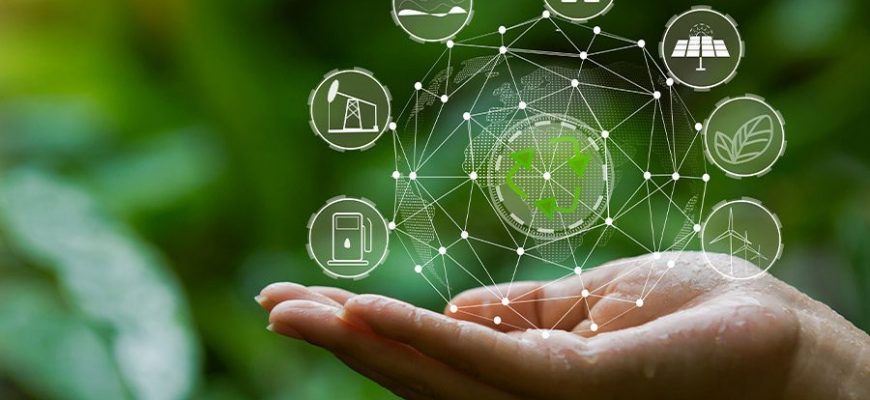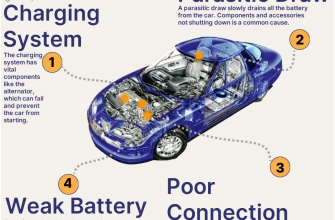In an era marked by climate change and environmental degradation‚ the demand for precise and real-time environmental monitoring has never been greater. As scientists and policymakers strive to understand and mitigate the impacts of human activity on our planet‚ sensor technology is stepping up to the plate‚ poised to revolutionize the way we observe and respond to environmental challenges.
The Rise of Smart Sensors
At the heart of this revolution lies the rapid evolution of smart sensor technology. These devices‚ equipped with advanced capabilities such as data processing‚ connectivity‚ and artificial intelligence‚ are transforming traditional monitoring practices. Unlike their predecessors‚ which often required manual data collection and cumbersome equipment‚ smart sensors are capable of autonomously gathering‚ analyzing‚ and transmitting data in real-time.
- Connectivity: With the advent of the Internet of Things (IoT)‚ sensors can now communicate with one another and share information across vast networks‚ leading to more comprehensive environmental insights.
- Data Analytics: Advanced algorithms enable these sensors to analyze data on the fly‚ providing actionable insights and predictions that can drive proactive environmental management.
- Affordability: As technology advances‚ the cost of producing and deploying these sensors has decreased significantly‚ making them accessible for a wide range of applications.
Applications in Environmental Monitoring
The applications of smart sensors in environmental monitoring are vast and varied. Here are some key areas where these technologies are making a significant impact:
1. Air Quality Monitoring
Air pollution poses a serious threat to public health and the environment. Smart sensors can be deployed in urban areas to monitor air quality in real-time‚ detecting pollutants such as PM2.5‚ ozone‚ and nitrogen dioxide. This data empowers city planners and health organizations to take immediate action to protect communities.
2. Water Quality Management
With freshwater resources dwindling‚ monitoring water quality is essential. Sensors can measure parameters such as pH‚ turbidity‚ and chemical contaminants in rivers‚ lakes‚ and reservoirs‚ ensuring the safety and sustainability of water supply.
3. Biodiversity Conservation
Smart sensors are also being used to monitor wildlife and their habitats. Acoustic sensors can detect animal sounds‚ while motion sensors track movement patterns‚ providing valuable data for conservation efforts aimed at protecting endangered species.
Challenges and Considerations
Despite the promising advancements in sensor technology‚ several challenges remain. Data privacy and security are paramount concerns‚ as the connectivity of these devices can leave them vulnerable to cyberattacks. Additionally‚ the integration of sensor data into existing environmental monitoring frameworks requires careful planning and collaboration among stakeholders.
The Future of Environmental Monitoring
Looking ahead‚ the future of environmental monitoring will likely be shaped by further technological innovations. The integration of machine learning and artificial intelligence will enhance the predictive capabilities of sensors‚ allowing for more effective early warning systems for natural disasters and environmental hazards.
Moreover‚ as the global community continues to prioritize sustainability and climate action‚ investments in sensor technology will be crucial. By harnessing the power of data‚ we can create a more resilient and sustainable world for future generations.
As we stand on the brink of a new era in environmental monitoring‚ the potential of sensor technology is undeniable. By revolutionizing the way we collect and analyze environmental data‚ these innovations are not only enhancing our understanding of the planet but also empowering us to take meaningful action in the face of environmental challenges. The future is bright‚ and with smart sensors leading the way‚ we are poised to create a healthier‚ more sustainable world.










This article brilliantly highlights the importance of smart sensors in combating climate change. The advancements in technology are truly remarkable!
I love how this piece explains the connectivity of smart sensors through IoT. It’s fascinating to see how data can be shared for better environmental insights.
This article captures the essence of how technology can help us tackle environmental challenges. Smart sensors truly represent a step forward for sustainability!
The potential applications of smart sensors are mind-blowing! From air quality monitoring to disaster response, they are game changers for environmental management.
I appreciate the focus on real-time data collection and analysis. It’s amazing to think about how quickly we can respond to environmental issues with these tools!
Great read! The affordability aspect of deploying smart sensors is encouraging. It means more communities can participate in environmental monitoring.